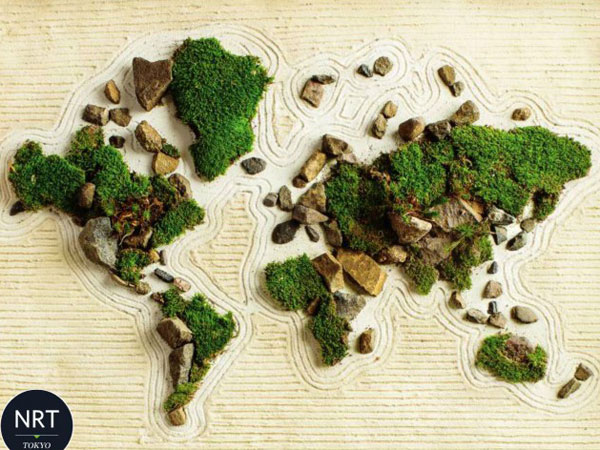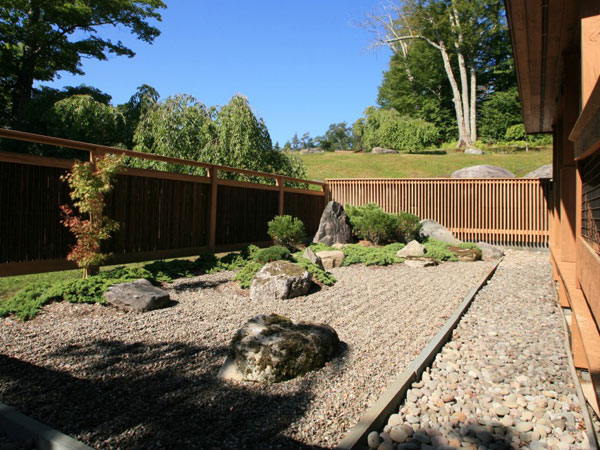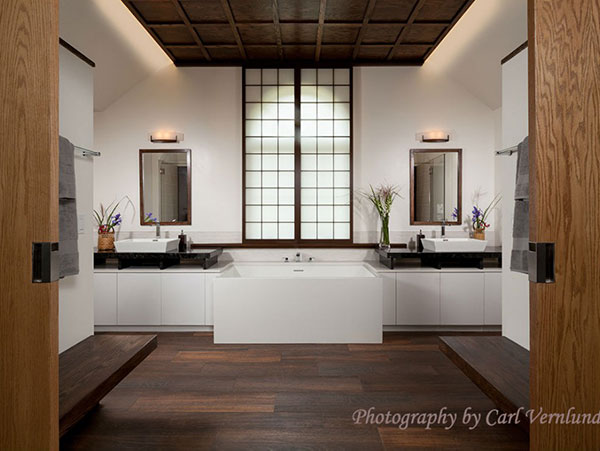More than a gate
Another Japanese spatial concept that contributes to designing a mindful space is the boundary in motion. One of the Japanese words for this is Ma, which generally means “gap.” The Chinese character for Ma (間) represents a gate made out of two doors with the moonlight coming through. But Ma is much more fluid than that.
There are versions of Ma in Japanese architecture, such as the Itsukushima Shrine, that go beyond the image of a fixed gate. Explained further in this video, one of the reasons being under water blurs the self/space boundary is that your surroundings (the water’s currents) are always moving. When the boundaries of a space are fluid, we may feel more mindful.
Moving boundaries
In the video above, imagine the red ink is one space, and the blue ink is another. These two spaces are constantly moving toward each other, creating a boundary that is always changing in form and color. The purple boundary you see in the video, constantly moving without a distinct edge or color, is Ma.
Ma is a term used throughout traditional Japanese art forms to describe an interval in time or space. In Japanese music, different length rests are often used to create effects. In dance and drama, performers often have the freedom to add or extend a pause in their singing, speaking, or movement–even in classical noh or kabuki pieces. Traditional Japanese painters often deliberately use blank space to create a “meaningful void.”
To experience the moving boundaries of Ma, watch this traditional noh performance. Notice how the performers use rests and pauses to create a meaningful void.
This article is based on Yoko Kawai’s talk, “Designing Mindfulness: Spatial Concepts in Traditional Japanese Architecture,” at the Japan Society in New York in May, 2018.


